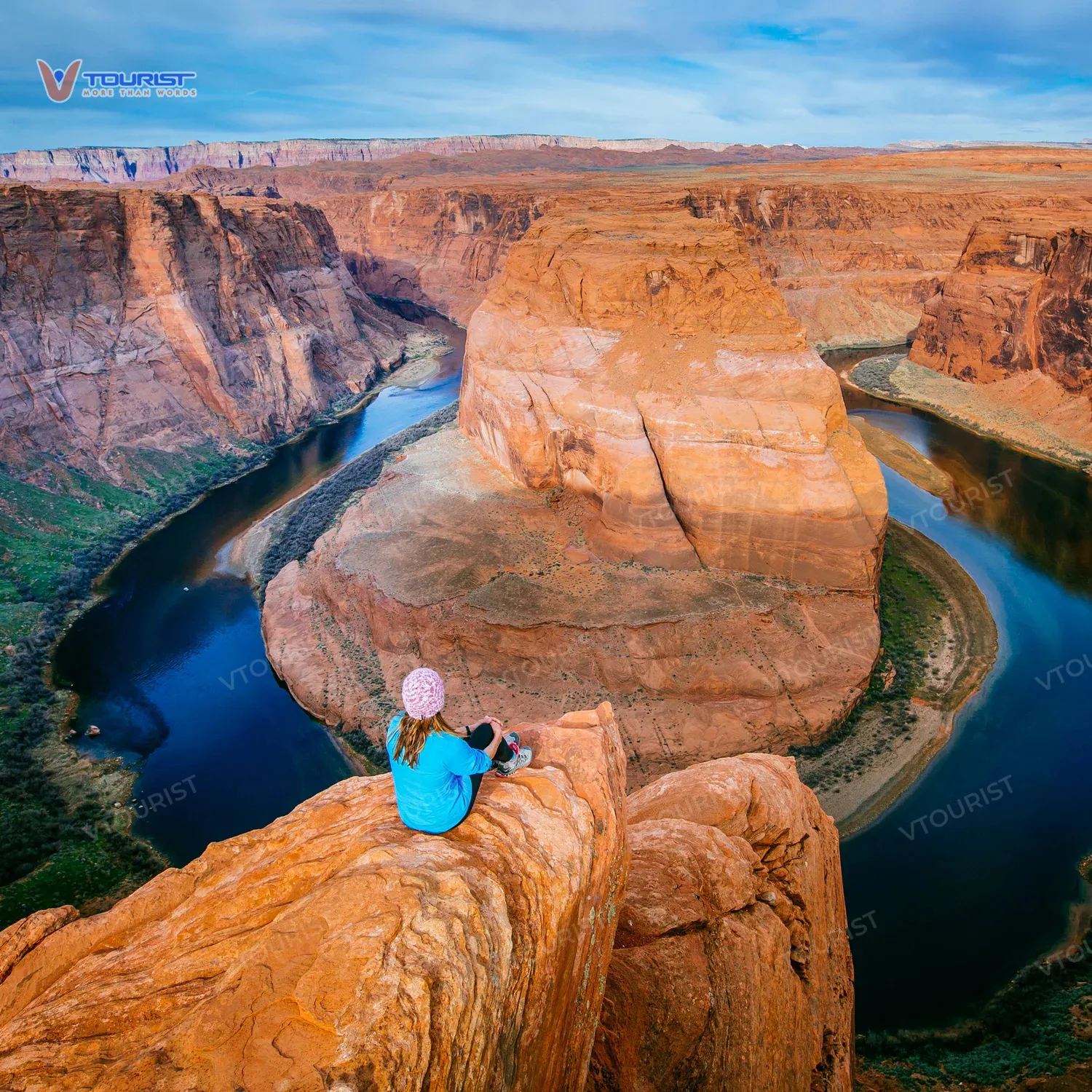Arizona, land of majestic natural wonders, is particularly enchanting in the spring. As the winter chill fades, the desert awakens with vibrant blooms, clear blue skies, and abundant sunshine. This is the perfect time to explore spectacular destinations and capture unforgettable moments. Are you ready to join “Travel the World” in discovering mesmerizing photography hotspots in Arizona this spring?
Horseshoe Bend: The Legendary Curve
Horseshoe Bend, also known as the horseshoe-shaped canyon, is one of Arizona’s most iconic travel destinations. Located near the town of Page, Horseshoe Bend draws visitors with its unique shape, crafted by the winding Colorado River over millions of years.
In the spring, the weather becomes more pleasant, free from the sweltering summer heat. The gentle sunlight highlights the red-orange sandstone cliffs, contrasting beautifully with the emerald green river, creating a breathtaking landscape. This is the ideal time to capture panoramic shots, capturing the sunset or dawn over the canyon.

For the best photos, visit Horseshoe Bend early in the morning or late in the afternoon. The soft natural light will help you capture the canyon’s beauty. Don’t forget to bring a wide-angle lens to encompass the majestic scenery in one shot.
Antelope Canyon: Canyon of Light
Antelope Canyon, known as the place of spiritual energy, is a geological marvel located on Navajo land. This canyon was formed by water and wind erosion over millions of years, creating soft curves and mysterious narrow passages.
In the spring, the sunlight pierces through these narrow gaps, creating ethereal light beams. The color of the rocks shifts throughout the day, from vibrant orange to deep red, offering visitors unique visual experiences.

Antelope Canyon has two main sections: Upper Antelope Canyon and Lower Antelope Canyon. Upper Antelope Canyon is easier to navigate and is famous for its direct light beams. Lower Antelope Canyon features a more complex structure, requiring visitors to climb stairs, but in return, you’ll witness extraordinary rock formations and smaller crowds.
To take beautiful photos in Antelope Canyon, you should book a tour with local Navajo guides. They will lead you to the most photogenic spots and help you adjust your camera settings for stunning shots.
Saguaro National Park: Kingdom of Giant Cacti
Saguaro National Park is a national park in southern Arizona, famous for its giant Saguaro cacti, symbols of the Sonoran Desert. In spring, the park bursts into a riot of colorful desert blooms, creating a truly unique landscape.

The Saguaro cacti, with their peculiar shapes and impressive sizes, are favorite photography subjects for many visitors. You can photograph them alone or in combination with the surrounding desert scenery for unique pictures.
Additionally, Saguaro National Park is home to a diverse range of wildlife, including birds, lizards, and desert foxes. If you’re lucky, you might encounter them and capture charming moments.
To explore Saguaro National Park, you can hike on the trails or drive along the Scenic Drive. Don’t forget to bring water, sunscreen, and a hat to protect yourself from the desert sun.
Sedona: Land of Red Rocks
Sedona is a small town in central Arizona, renowned for its majestic red rocks and spiritual energy vortices. In spring, Sedona enjoys pleasant weather, with clear skies and crisp air.

The red rocks in Sedona, with their unique shapes and vibrant colors, are an endless source of inspiration for photographers. You can photograph them from various angles, from the base of the mountains to the peaks, creating diverse and impressive images.
Additionally, Sedona offers other exciting attractions, such as Chapel of the Holy Cross, a church built into a red rock, and Slide Rock State Park, a natural park with natural water slides.
To fully experience Sedona, you should spend at least a few days here. You can hike, climb, take jeep tours, or simply relax and enjoy the fresh air of this beautiful place.
Grand Canyon National Park: World’s Greatest Canyon
While the Grand Canyon is beautiful year-round, spring breathes new life into this vast canyon. The weather is milder, tourist numbers are lower than in summer, and you have the chance to witness wildflowers blooming on the slopes.

The Grand Canyon is an unmissable destination for anyone who loves landscape photography. This colossal canyon stretches over 277 miles, with widths up to 18 miles and depths over a mile.
To take great photos at the Grand Canyon, you need patience and thorough preparation. Visit early in the morning or late in the afternoon for the best lighting. Don’t forget to bring a wide-angle lens to capture the grandeur of the canyon in one photo.
Conclusion
Spring in Arizona is an excellent time to explore natural wonders and capture memorable moments. With the suggestions above, “Travel the World” hopes you’ll have an exciting and enriching trip. Don’t forget to share your beautiful photos with us! Are you ready to embark on your journey?